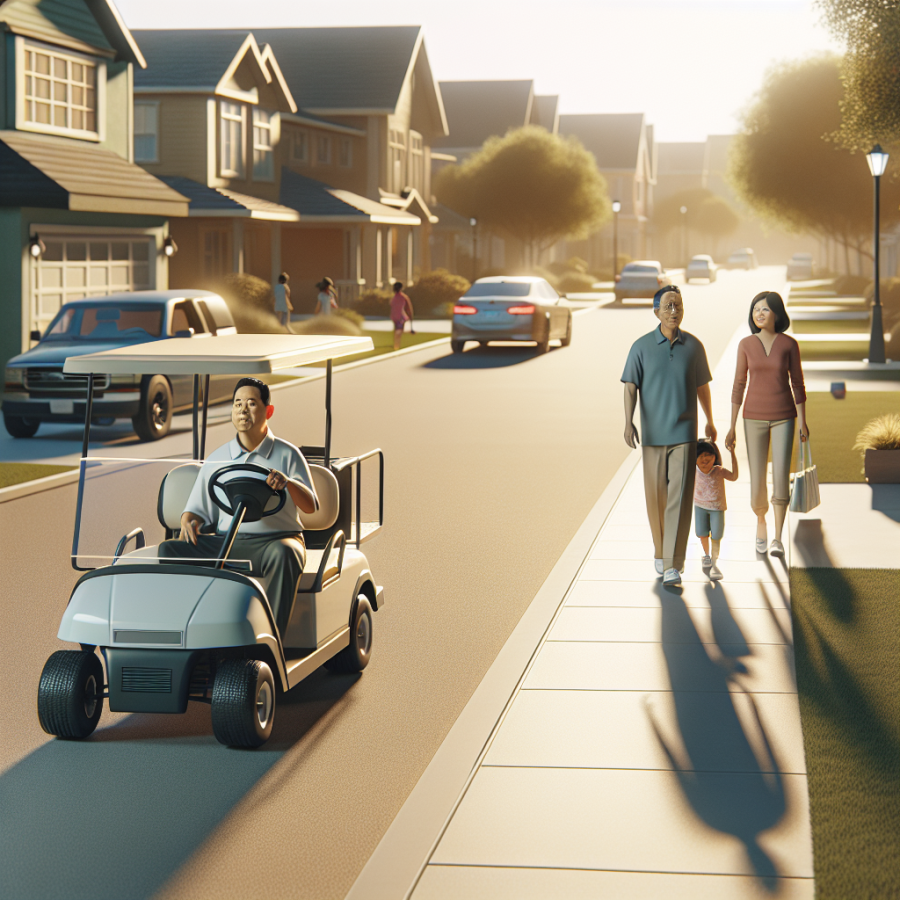Assessing the Safety Risks Involved in Operating Golf Carts on Sidewalks
Golf carts, originally designed for use on golf courses, have evolved into a popular means of transportation for short distances in many communities. However, with this increased usage comes the question of safety, especially when these vehicles are operated on public sidewalks. It is important to analyze and understand potential risks involved in these practices in order to ensure not only the safety of the cart drivers, but also other sidewalk users such as pedestrians, cyclists, and even children at play.
One of the main safety risks associated with operating golf carts on sidewalks is their quiet operation. Unlike traditional automobiles, golf carts run relatively silently, meaning pedestrians may not notice them approaching from behind or around corners. This can potentially lead to accidents if pedestrians suddenly step in front of a moving golf cart.
Another crucial safety concern involves the speed at which golf carts can travel. While lower than average cars, the typical speed of a golf cart can still range between 10 to 25 miles per hour depending on the model. This speed can be hazardous on sidewalks which are generally not very wide, thereby leaving less room for error. An unexpected bump or an obstacle might cause the golf cart to quickly veer off course, posing a threat to bystanders.
The physical makeup of golf carts contributes significantly to the risk factor. Golf carts, unlike cars, are open vehicles. Even in models where some form of a safety barrier exists, it's usually not to the same standard as those found in regular vehicles. The absence of doors and often seatbelts means that in case of an accident, passengers in a golf cart are more likely to be ejected from the vehicle, which could lead to severe injuries.
Golf carts are not usually equipped with the same range of safety features that one would expect in a car, such as airbags, crumple zones or anti-lock brakes. This means that even at relatively low impact speeds, a collision could result in serious injury for passengers.
When driving on sidewalks, golf cart operators have to contend with many variables that the vehicles were not originally designed to handle. While they are maneuverable and can navigate around many obstacles easily, slippery surfaces, curbs, and steep slopes present on sidewalks can destabilize a golf cart, leading to a potentially disastrous situation.
From a legal standpoint, operating a golf cart does not require the same licensing as a motor vehicle, which means the driver might lack sufficient training and understanding of driving safety principles.
Read also:
Unravelling the Mystery: The Golf Course Behind the Caddyshack Film
Understanding the Legal Implications of Driving Golf Carts on Sidewalks
In many places, the idea of driving a golf cart on the sidewalk wouldn’t even be entertained. These vehicles are mostly seen and used on golf courses or in retirement communities. In recent years, however, there has been an increasing trend of golf carts being utilized in urban and suburban settings as an eco-friendlier mode of transportation. With this unconventional use of golf carts comes a new lineup of legal issues and safety concerns that demand careful consideration.
The legality of operating golf carts on sidewalks largely depends on local laws and ordinances. In many jurisdictions, golf carts are regarded under the same category as other low-speed vehicles like mopeds and scooters. This usually means that they are restricted from being used on sidewalks, which are intended primarily for pedestrian use. Even in communities where golf carts are a common mode of transportation, there may still be specific laws barring them from sidewalks due to safety reasons.
Some local legislations may permit the use of golf carts on sidewalks but under certain constraints. For instance, they may only be allowed during specific hours, or the driver may need to obtain a special permit to do so. These stipulations are aimed at ensuring the safety of both golf cart drivers and pedestrians. Regardless, it's important that individuals understand and respect these laws to prevent potentially dangerous situations.
These legal restrictions are rooted in safety considerations. Operating a golf cart on a sidewalk poses a series of safety risks. The most obvious one is the potential for collisions with pedestrians. Since sidewalks are primarily intended for pedestrians, they may not be wide enough to accommodate both a golf cart and foot traffic. This lack of space could potentially lead to accidents.
Furthermore, golf carts lack many of the safety features found in cars, such as airbags or crash-worthy structures. This makes golf cart drivers, pedestrians, and cyclists more vulnerable in the event of an accident. The risk increases with the element of speed involved – even though these vehicles have a maximum speed limit of around 15 to 25 miles per hour, they can still cause serious harm without the right safety precautions in place.
Aside from physical injuries, driving a golf cart on a sidewalk might also entail legal implications, such as penalties or even litigation, in case of accidents and injuries. If a golf cart, driven on a sidewalk, were to collide with a pedestrian, the driver could potentially face legal action. With this in mind, it’s crucial for golf cart users to fully understand their local traffic laws to evade legal troubles.




